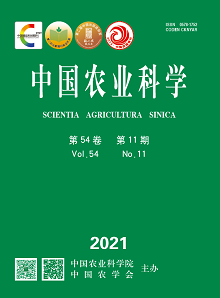【Objective】Although China is the third biggest country in sugarcane planting areas and total production in the world, the sugarcane yield per hectare in China is much lower than the other high-yield sugarcane producing countries. This paper studied sugarcane yield potentials and current yield gaps in different sugarcane producing areas in China, and then the potential to reduce yield gap by optimizing yield-limiting factors was discussed, and thus to provide reference for increasing yield and efficiency in sugarcane production. 【Method】This study was based on data collection including statistical data and experiment data from literatures. A total of 147 data sets of sugarcane yield and planting areas from 1999 to 2018 in different provinces (autonomous regions, cities) were obtained from the national statistics database. Based on the database of CNKI and Web of Science, experiment data about planting density, fertilization rate, variety and yield from 93 papers were collected for main sugarcane producing areas, including 54 papers in Guangxi, 14 papers in Yunnan, and 25 papers in Guangdong. In each producing area, the mean of upper 5% experimental yields was used as yield potential, and the mean of statistical data as farmer’s yield, and yield gap was calculated as the difference between yield potential and farmer’s yield. Then the relationships between yield and fertilization rate, planting density and variety were analyzed, and therefore recommendations of optimized fertilization rate, planting density, variety and the potential to reduce yield gap were obtained. 【Result】Guangxi, Yunnan and Guangdong were the three main sugarcane producing areas in China. The sugarcane yield potentials were 137.1 t·hm-2in Guangxi, 147.2 t·hm-2in Yunnan, and 145.8 t·hm-2in Guangdong, respectively; while farmer’s yield were 74.2, 62.0, 78.3 t·hm-2, respectively, only achieving 54.1%, 42.1%, and 53.7% yield potential for each area, respectively. Fertilization rate, planting density and variety had significant effects on sugarcane yield, and there was big potential to optimize these yield-limiting factors. The fertilization recommendations were 270 kg N·hm-2, 99 kg P2O5·hm-2, 208 kg K2O·hm-2 in Guangxi, 228 kg N·hm-2, 117 kg P2O5·hm-2, 281 kg K2O·hm-2 in Yunnan, and 240 kg N·hm-2, 71 kg P2O5·hm-2, 193 kg K2O·hm-2 in Guangdong. The recommended planting density in Guangxi, Yunnan, Guangdong was 8×104-10×104, 10×104-12×104, 8×104-10×104 buds/hm2, respectively, and the varieties with high yields were GF series, GT series and YT series, respectively. 【Conclusion】According to the results, the potentials of yield increase in Guangxi, Yunnan, Guangdong were 62.9, 85.2, and 67.5 t·hm-2, respectively. Fertilization optimization could increase yield 16.9, 28.4, and 25.3 t·hm-2 for each area. Optimizing planting density could increase yield 23.6, 27.9, 22.1 t·hm-2, and optimizing sugarcane variety could increase yield 26.8, 42.4, and 15.1 t·hm-2, respectively.









